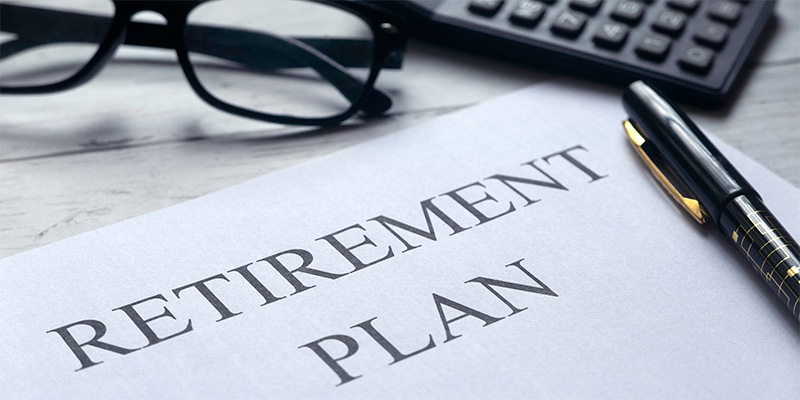
The Best Way to Save for Retirement
August 30, 2023
Let's talk about retirement accounts…
The government provides incentives for you to save in a tax-advantaged way. You can always stick money in a bank account, but you get tax benefits by saving through a 401(k) or an IRA.
Sure, there are limitations (there's only so much you can contribute), but this is the best way to save for retirement, and it's shocking how few people take advantage. You would think everybody would take advantage of a 401(k) plan if their company offered one. That's not the case, though—only around 30%–40% of people do, which is nuts.
Again, they're tax-advantaged—they help you avoid a lot of taxes and grow your investments tax-free.
Max It Out
If you're smart about this, you can save a lot of money over the years. So, if you're working at a company and it has a 401(k) plan and you're not enrolled, the question is why? It's the easiest thing in the world. You don't have to write checks. You just tailor your asset allocation, and your company takes the money out of your paycheck and automatically invests it.
Whether you choose a traditional 401(k) for the upfront tax break or a Roth 401(k) for tax-free income in retirement (or both), the contribution limits are the same. For 2023, the 401(k) contribution limit for employees is $22,500, or $30,000 if you are age 50 or older.
So, if you are making $100K a year, you can max it out—because remember, you should be saving 20% of your income.
Here's how this works. If you make $100K a year and you're contributing $20,000, for tax purposes, you are making $80,000 a year. But you're saving what you would've paid in taxes on that last $20,000. By opening a 401(k) and maxing it out, you're saving $4,000 a year.
That’s a good chunk of money. Like, what would you do for $4,000? My guess is you would eat spiders for $4,000, yet people are too lazy to figure out a 401(k).
Bottom line, you should always try to max out your contribution. It's a massive, massive tax benefit.
I mean, think about this. If you saved $4,000 a year for 40 years, that's $160,000… and that money grows over time. So, if you compound that, it's hundreds of thousands of dollars in tax savings over the course of your life.
Target Date Funds
You're going to have a few investment options in a 401(k)—some stock funds, some bond funds. A lot of people now opt for target retirement funds. The last statistic I saw was that 50% of retirement assets were invested in target date funds.
Say you're invested in a 2065 retirement date fund—meaning you plan to retire in 2065. You start off with a more aggressive asset allocation, like 90% stocks and 10% bonds. And as that fund matures, it will gradually reduce its stock holdings and gradually increase its bond holdings.
Target date funds take all the brain damage out of the equation. Before target date funds, you'd say, Okay, I'm 40 years old, so I should be 40% in bonds, 60% in stocks, I need to pick these funds, I need a growth fund and a value fund and an international fund and a high-yield fund.
Confusing, right? People were intimidated by it. With target date funds, you get one-stop shopping. You set it and forget it. One target date fund and you're done.
The other 50% of people who are not in target date funds are screwing around with growth funds and value funds and stuff like that. And some of them try to time the market. Don't do that. Just pick your asset allocation and leave it alone.
IRA Accounts
What about individual retirement accounts (IRAs)?
First, there are two types of IRAs—there's a traditional IRA and a Roth IRA.
With a traditional IRA, you get to take the tax benefit now. The IRA contribution limits for 2023 are $6,500 for those under age 50 and $7,500 for those age 50 or older. So, on the $6,500 you contribute, that reduces your taxable income by $6,500. If you're paying 20% in taxes, you get to save 1,300 bucks. However, when you sell these assets (i.e., when you retire), you're going to pay taxes then.
You're going to have to pay taxes at some point. You can pay now, or you can pay later.
Again, with a traditional IRA, you take the tax benefit now and pay taxes later. The Roth IRA is the other way around. You get to contribute $6,500 now, and you can't take a tax benefit off it, but you can withdraw the money when you retire tax-free. A lot of people like Roth IRAs. I would say that Roth IRAs are much more popular than traditional IRAs.
I have mixed feelings on this. I tend to like the traditional IRAs better. And one reason is because I'm a little bit paranoid. We're running up huge deficits, and I could see the government reneging on its promise in 40 years and making those Roth IRA distributions taxable.
For me, a bird in the hand is worth two in the bush. I like to take the tax benefit now.
Free Money
I should also talk about Simplified Employee Pension Plans (SEP IRAs), which are designed to help self-employed individuals and small-business owners get access to a tax-deferred benefit when saving for retirement.
Now, the amazing thing about SEP IRAs is that you can make a humongous contribution—up to $66,000 per year. Like a traditional IRA, you can contribute to that tax-free.
I have been maxing mine out for years, and it is incredibly powerful. It’s a nice offset to the taxes you have to pay when owning your own business, and I'm always shocked at the number of people who don't take advantage of it.
There are some other accounts, too, such as Roth 401(k)s and 403(b) plans, but the point is that if you can get a retirement account, get it, max it out, and take the maximum tax benefit. It is free money, and we all like free money.
Learn more about saving and investing for the retirement you want with my step-by-step guide.
Jared Dillian, MFA

Most popular upgrades from The Jared Dillian Letter…
Heartland Investor: Jared’s newest premium service. Built for investors who want to start building wealth deliberately, durably, and without the hype.
Each month, Jared and his long-time analyst Adam Crawford bring you one undervalued stock with a strong balance sheet, wide moat, and room to run. Designed for thoughtful, fundamentals-first investors who want a portfolio that can last.

The Daily Dirtnap: Jared’s macro newsletter for investing professionals. This daily letter takes a top-down approach, looking at the various asset classes, including stocks, bonds, currencies, and commodities. Join over 4,000 readers who read his market insights every weekday.


Street Freak: As the most active of Jared’s portfolio products, Street Freak is an aggressive stock-picking newsletter. It’s written for astute investors who crave creative, fresh macro analysis and forward-looking trade ideas so they can invest more opportunistically, without much hand-holding along the way. Adjusted for risk, of course.
